Cat & Kitten Feeding Guides
Cats and kittens like to eat little and often, so their daily food serving should ideally be split into several smaller meals throughout the day. Each James Wellbeloved recipe is carefully balanced, so make sure to check our <strong>cat feeding guide by weight</strong> per each flavour for the right serving sizes. You should also supply your cat or kitten with plenty of clean, fresh drinking water at all times.
1. Kitten Feeding Guide
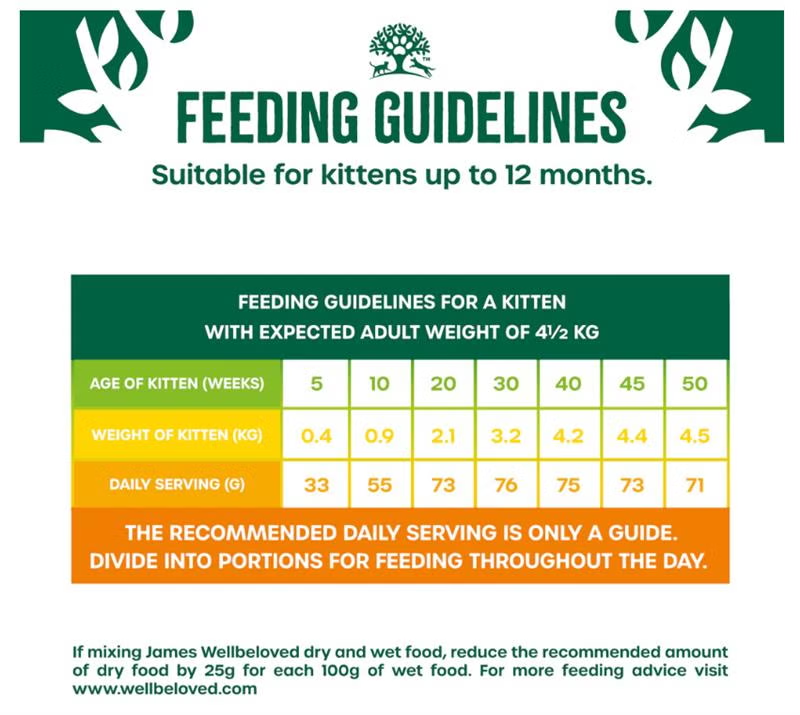
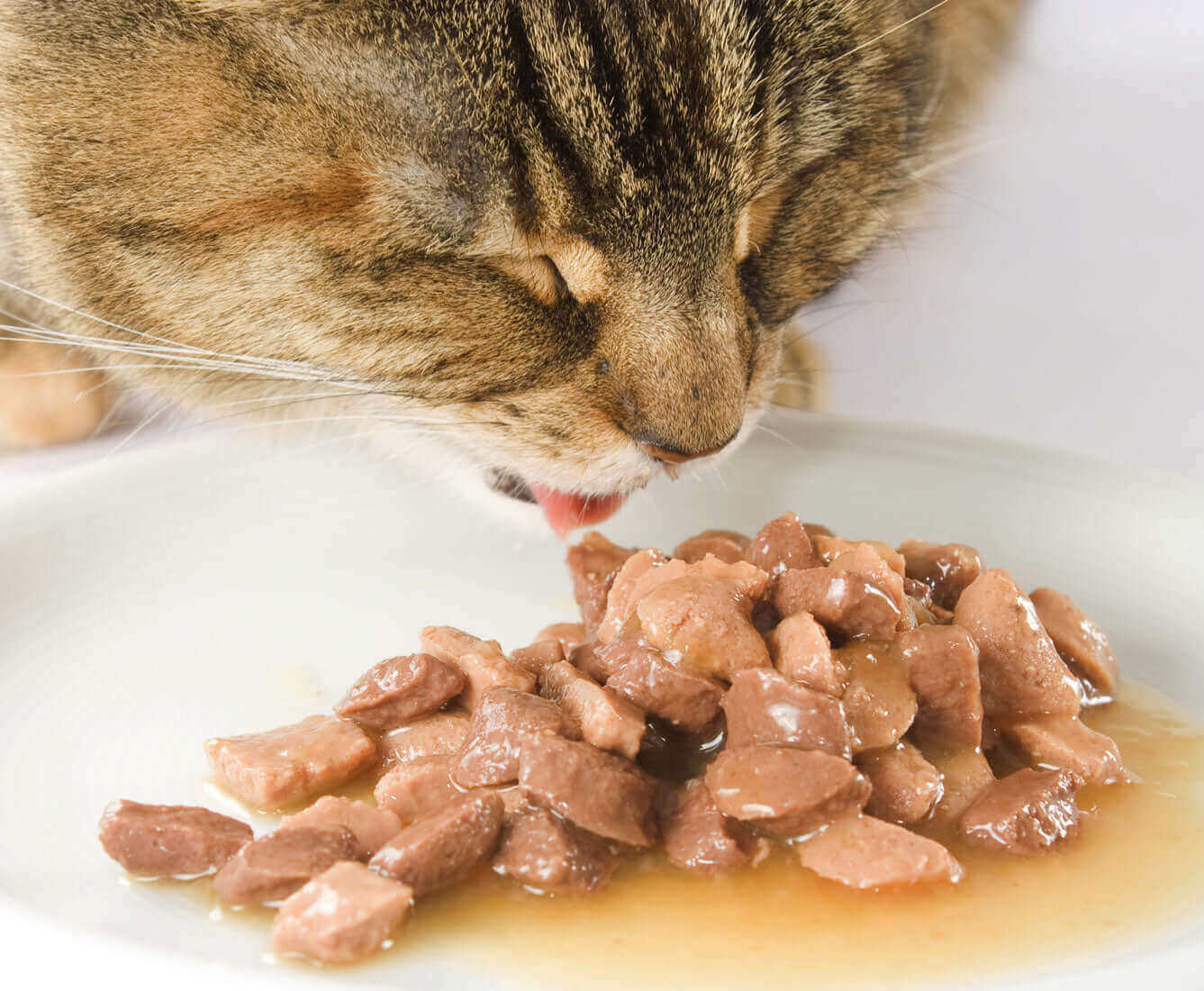
Using an example from the feeding chart: if your female kitten’s mother weighed 4.5kg as an adult, then the daily serving size for your kitten at 5-weeks-old and current weight of 0.4kg would be 33g of Turkey and Rice kitten dry food.
> Check out our range of Kitten food <
Using another example from the feeding chart: if your male kitten is expected to weigh 4kg in adulthood, then the daily serving size for you kitten at 8-weeks-old and current weight of 0.9kg would be 2 ¼ pouches of wet food.
You can find more advice on how often to feed your kitten here.
2. Adult Cat Feeding Guide
A normal cat should spend a lot of time sleeping and grooming, but is also allowed to roam outdoors (if appropriate) and enjoy regular play sessions with their owner.
Every cat has a unique personality, and with it comes preferences for different food flavours and textures. Often, cat owners feed their cat a mix of dry and wet cat food, but your cat might prefer one over the other, or change their favourites later in life.
If you are mix-feeding James Wellbeloved wet pouches and dry food, make sure to reduce the dry food allowance by 20g for every 85g pouch fed. Keep reading our cat feeding guide for more information on each food type.
> Check out our range of adult cat food <
3. Adult cat dry food feeding guidelines
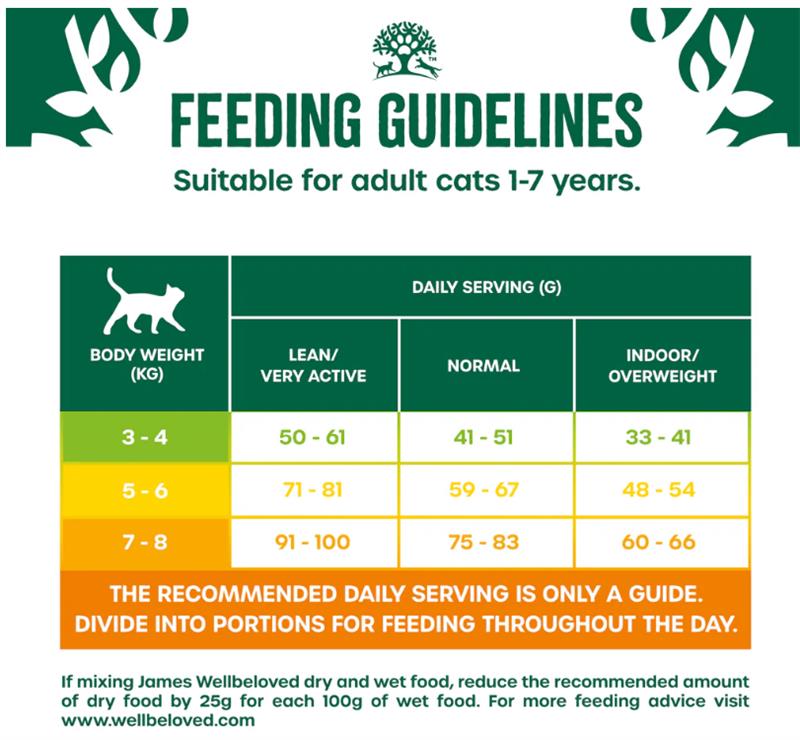
Dry food can make feeding easier, as you can leave a portion out during the day for your cat to eat in their own time. However, remember to discard any leftovers to avoid spoiling. Always read the package instructions because portions vary between food flavours, or go to the product pages for more information.
> Check out our range of adult cat dry food <
Alternatively you can check out our handy table below.
4. Adult cat wet food feeding guidelines
You can help your cat to stay hydrated by feeding them wet cat food. James Wellbeloved wet cat food comes in pouches, making it easy to save leftovers in the refrigerator. You should serve wet cat food at room temperature, but if the whole pouch is not used, you can refrigerate the unused portion. Although wet cat food contains more water than dry food, you should still supply plenty of clean, fresh drinking water for your cat at all times.
> Check out our adult wet cat food range <
You can find extra information on how much to feed a cat here.
5. Overweight Cats
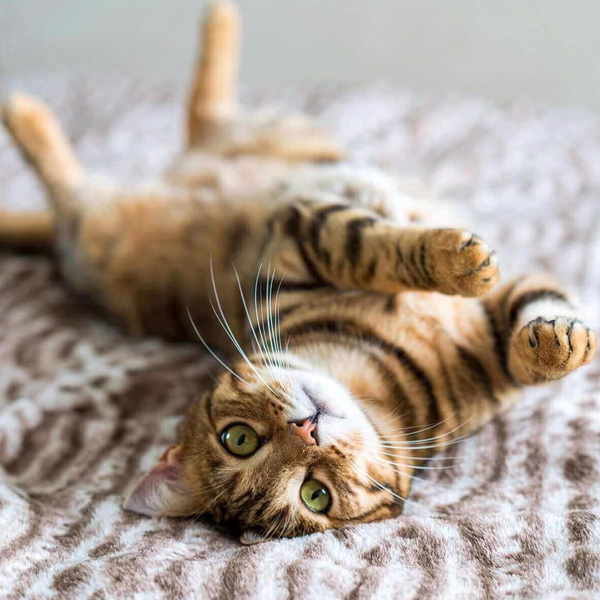
If you think your cat is overweight, you should speak to your vet before starting a weight reduction programme. Too rapid a weight loss can be dangerous for your cat, so it’s important to weigh your cat regularly to ensure that weekly weight loss is no higher than the maximum recommended. Our cat feeding guides are worked out using the average cat for the weight shown, but your cat could differ substantially from the average, and requirements can vary considerably between cats of the same weight. The predicted weight loss is based on a 15% reduction in calorie intake from the level necessary to maintain current weight. If your cat fails to lose weight, you should consult a vet.
If feeding both wet and dry food during the day, reduce the daily allowance of dry food by 20g for every pouch fed. The recommended daily serving is only a guide as requirements vary considerably from cat to cat and can depend on whether other foods are also offered. Ideally, split the daily allowance into numerous meals throughout the day – cats like to be fed little and often.
You may wish to consider products which are specifically created to target overweight cats. Using our knowledge and expertise, we increase the level of dietary fibre in our light cat food to satisfy the cat’s appetite and increase the protein to encourage loss of body fat rather than muscle.
> Check out our light adult dry cat food <
6. Indoor Cats
However, just because indoor cats can’t go outside, you can still keep your cat healthy and fit by playing games with them, or using special toys to encourage them to practice their instinctive hunting behaviours.
7. Senior Cat Feeding Guide
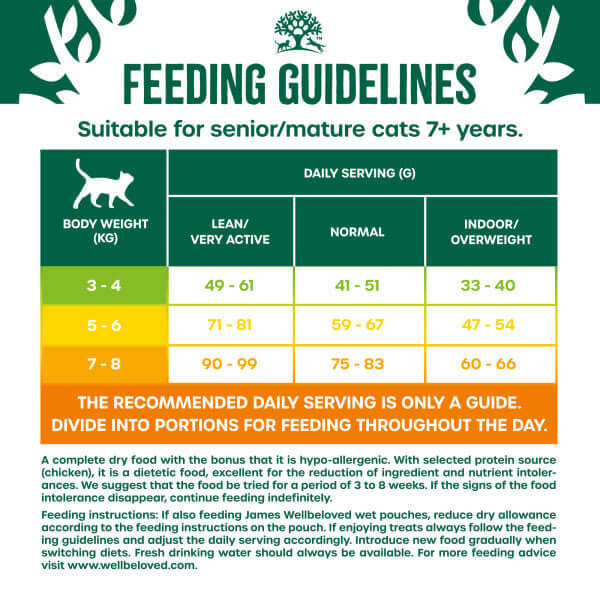
Later in your cat’s lifetime, he or she will need more heart and joint health support. James Wellbeloved recipes are specially formulated to be supplemented with:
-
Taurine to support heart health
-
A blend of omega oils, glucosamine, chondroitin and plant extracts to support older joints
-
Vitamins and minerals to support normal health
> Check out our Senior Cat range <
Please read the food packaging carefully or check out the specific guidelines per each product on our website.